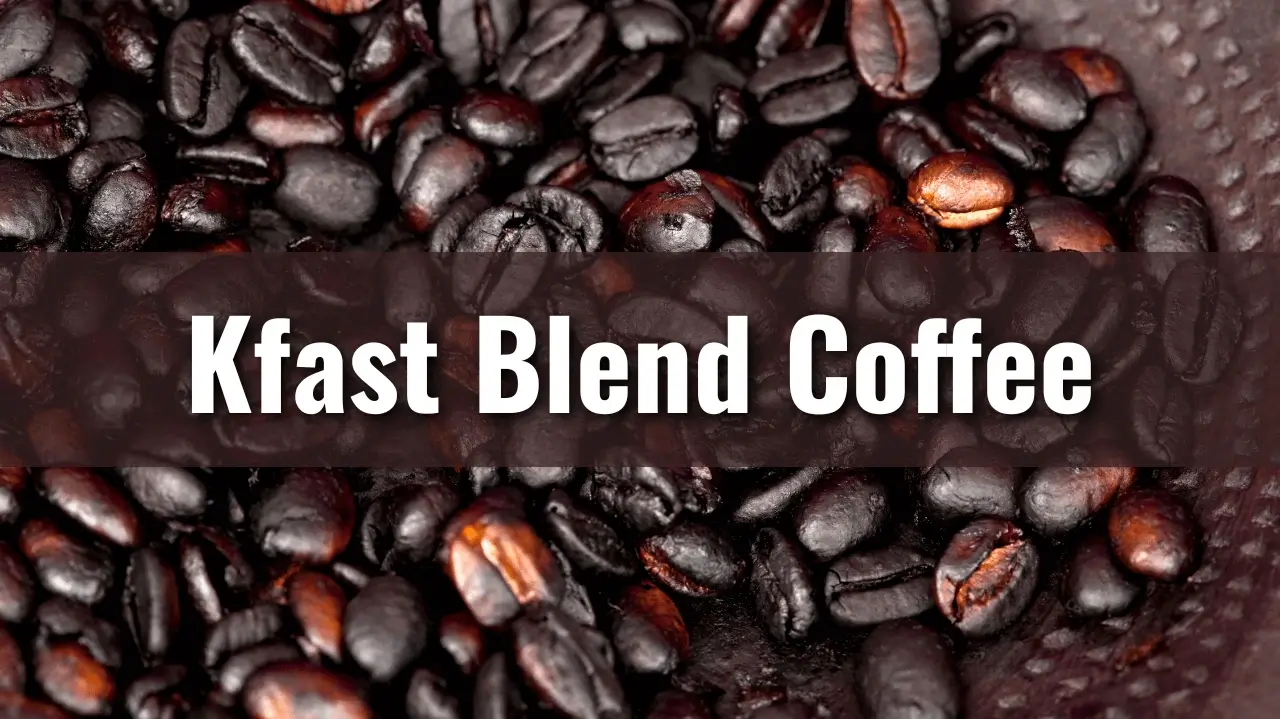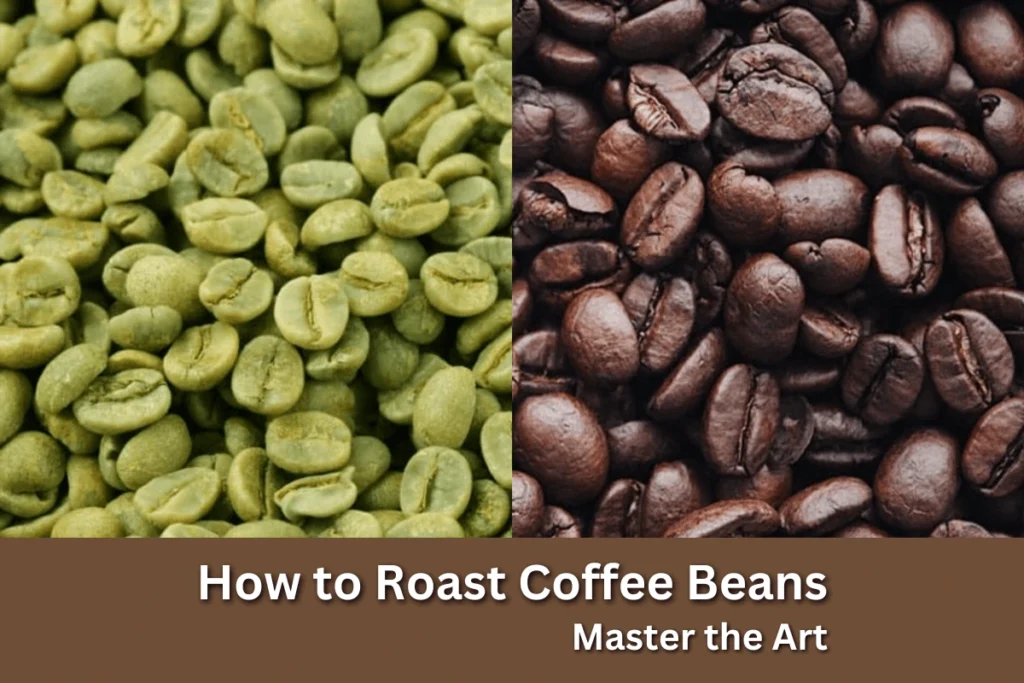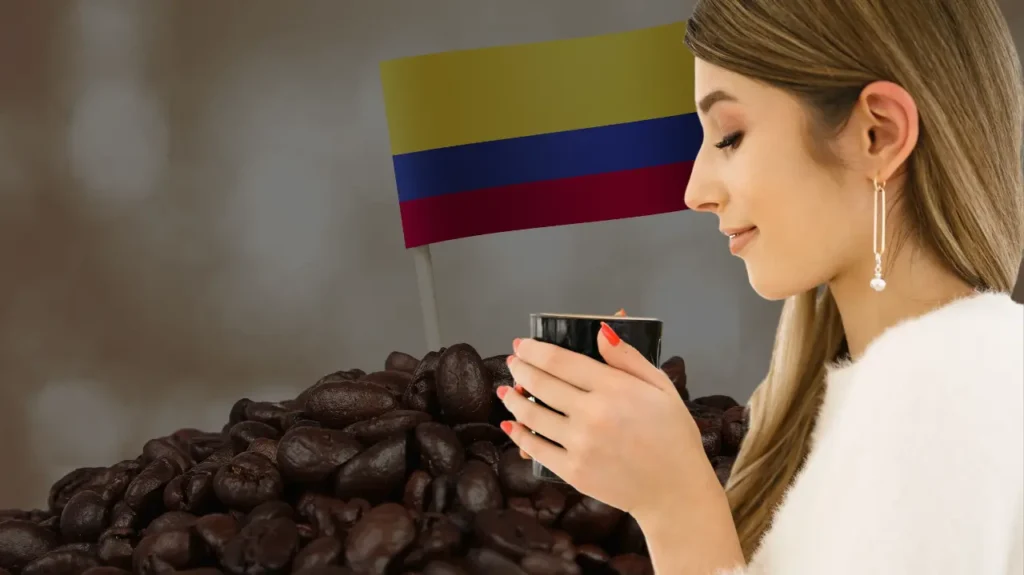There’s a reason your daily cup sometimes tastes like a revelation and, other days, a letdown. Blame it on the beans. Let’s talk about Kfast Blend Coffee.
It’s not real (yet), but imagine this: beans from Ethiopia’s misty mountains and Colombia’s sunlit slopes collide in your cup.
Tart berries meet caramel warmth. That’s blending, where science meets soul to turn “just coffee” into your coffee.
Single-origin coffees are like solo travelers, unique but limited. Blends? They’re the road trip.
Kfast Blend Coffee could be your perfect journey, with roasters weaving bright acidity with a buttery body so every sip feels like a discovery. No lab coats, just passion in a bag.
This guide isn’t about jargon. It’s about cracking the code: how blends are born, why they’re your secret weapon for consistency, and how to hunt down (or hack) your own Kfast Blend Coffee magic.
Defining Coffee Blends
Coffee blends are like a well-rehearsed band; each member (or bean) plays a distinct role. Take Kfast Blend Coffee as an example: it’s not one origin but a fusion.
Imagine Ethiopian beans, bursting with zesty citrus, shaking hands with Colombian beans offering nutty warmth.
Blends marry beans from different regions, roasting them to highlight their strengths, then mixing them into a unified flavor profile. It’s teamwork in a cup.
Single-origin coffee, meanwhile, is a solo artist. Grown in one region, maybe a single farm, it shouts, “This is Sumatra!” or “Taste Guatemala’s soil!”
These coffees shine with terroir-driven uniqueness. But here’s the catch: weather, harvests, and luck shape their taste yearly.
A drought might mute fruity notes; a rainy season could amplify acidity. Single-origin is pure but unpredictable. Learn more about coffee’s impact on dental health here.
Blends thrive on consistency. Roasters tweak ratios yearly to keep your favorite morning cup steady, bright but not sharp, and rich but not heavy.
Kfast Blend Coffee embodies this balance. Maybe a bean’s natural acidity is too bold alone, so roasters pair it with a smoother, chocolate-toned bean.
The result? Harmony. No single note dominates. It’s why blends like Kfast become daily staples, reliable, layered, and crafted for those who want both adventure and comfort in every sip.
The Art and Science of Creating Coffee Blends
Creating a coffee blend like Kfast Blend Coffee isn’t just mixing beans; it’s balancing contradictions. It’s about celebrating the chaos of nature while forcing it into harmony.
Roasters act as both scientists and artists, juggling variables like flavor, roast profiles, and crop quirks. The goal?
A cup that feels familiar yet surprising, bold yet balanced. Let’s break down how Kfast Blend Coffee could come to life, step by step.
Selecting the Beans
Creating a blend like Kfast Blend Coffee starts with solving a flavor puzzle. Roasters hunt for beans that don’t just taste good alone; they need to collaborate.
Ethiopian beans, for example, might bring tart and floral highs. Guatemalan beans add earthy depth, while Colombian beans offer caramel sweetness.
It’s not about picking “the best” beans but the ones that fill gaps in the flavor story. A roaster’s job? To ensure no note overpowers the others.
Roasting the Beans
Once chosen, beans face the roaster’s flames, a step where science and gut feelings collide. Delicate Ethiopian beans might roast lightly to preserve their citrusy spark.
Heartier Guatemalan beans could handle a medium roast to coax out cocoa tones. Colombian beans? A touch darker to caramelize their sugars.
For Kfast Blend Coffee, roasting each bean separately is key. Why? Uniform roasting risks dulling unique traits.
Separate roasting lets each origin shine, like tuning instruments before an orchestra plays.
Blending
Post-roast, the beans meet. A roaster might mix 40% Ethiopian for brightness, 30% Guatemalan for body, and 30% Colombian for sweetness.
But ratios aren’t fixed; they’re tweaked yearly based on crop quality. A weak Ethiopian harvest? Add more Colombian to balance the acidity.
Kfast Blend Coffee thrives on this flexibility. It’s not a recipe; it’s a conversation between nature and craftsmanship.
The result? A cup that’s bold but never harsh, complex but never confusing.
Blending and Fine-Tuning
This is where roasters earn their stripes, transforming roasted beans into a symphony. For Kfast Blend Coffee, blending isn’t just dumping beans together. It’s strategic layering.
Ethiopian beans, now lightly roasted and citrus-forward might take 40% of the mix for vibrancy.
Colombian beans, caramelized to sweetness, claim 30%, while Guatemalan beans, roasted for cocoa depth, anchor the remaining 30%. But these numbers aren’t gospel.
They’re a starting point.
Tasting begins. Too sharp? Boost the Colombian ratio to soften the edges. Too flat? Add a dash of Ethiopian zing.
Roasters might even tweak roast levels post-blend, lightly re-roasting a portion of beans to amplify body or acidity. For Kfast Blend Coffee, this trial-and-error phase is non-negotiable.
It’s where “good enough” becomes “hell yes.”
Harvest variations demand flexibility. A rainy year in Ethiopia might mute fruity notes, so roasters compensate with brighter Central American beans.
Kfast Blend Coffee survives these curveballs because blending isn’t static; it’s a dialogue with nature.
Why Choose Coffee Blends? The Benefits
Coffee blends often fly under the radar, overshadowed by single-origin hype. But for those who value a cup that’s both exciting and dependable, blends like Kfast Blend Coffee (even as a concept) reveal their genius.
Let’s explore why blends aren’t just practical; they’re a crafty solution to coffee’s biggest challenges.
Consistency
Coffee is at the mercy of nature. A drought in Ethiopia dulls fruity notes; too much rain in Colombia mutes caramel sweetness. Single-origin coffees ride this rollercoaster.
Blends, however, anchor your cup. Roasters adjust ratios yearly, adding more Guatemalan beans if Ethiopian harvests falter or boosting Brazilian chocolate tones when Sumatran earthiness fades.
Kfast Blend Coffee would thrive here, offering the same berry-chocolate-caramel dance every morning, regardless of climate chaos.
It’s coffee’s answer to your favorite comfort food: always there, always right.
Complexity
Single-origin coffees sing solo. Blends harmonize. Imagine Kfast Blend Coffee as a three-act play: Act One, Ethiopia’s bright citrus curtain-raiser; Act Two, Colombia’s honeyed sweetness swelling in the middle; Act Three, Guatemala’s cocoa-rich finale.
This layered experience isn’t accidental; it’s engineered. Roasters layer beans like a perfumer layers scents, ensuring no single note dominates.
Why sip one flavor when you can unravel three?
Balance
Some beans are divas. Ethiopian Yirgacheffe shouts with floral acidity; Sumatran Mandheling growls with earthy boldness.
Alone, they’re intense. Blended? They’re refined. Kfast Blend Coffee would act as a mediator, mellowing Ethiopia’s zest with Colombia’s caramel hug, grounding it all with Guatemala’s cocoa depth.
It’s not about muting flavors but orchestrating them. Think of it as coffee diplomacy: resolving clashes and fostering unity.
Cost-Effectiveness
Single-origin specialty beans can cost as much as a fancy dinner. Blends? They’re the weekday takeout you crave.
By mixing a small percentage of high-cost beans (like rare Ethiopian heirlooms) with affordable, crowd-pleasing beans (like Brazilian Santos), roasters keep prices sane without sacrificing soul.
Kfast Blend Coffee would follow this playbook, sprinkling luxury (Ethiopia’s florals) into a base of dependable, wallet-friendly beans.
Curious about caffeine content in different brews? Explore Vietnamese coffee’s caffeine levels.
Exploring Popular Coffee Blends
While Kfast Blend Coffee remains our North Star, the coffee world brims with iconic blends that cater to every mood and machine.
These real-world examples show how blends adapt to cravings, rituals, and even dietary needs, proving there’s no one-size-fits-all in coffee. Let’s tour the classics.
Breakfast Blend
Breakfast blends are the soft sunrise of coffee. Lightly roasted for approachability, they skip the bitter punch and opt for smooth, nutty whispers.
Roasters like OneGreatCoffee craft these to pair with scrambled eggs and toast with toasted almond notes with a hint of citrus.
Kfast Blend Coffee could slot in here, balancing Ethiopian brightness with Colombian mellowness for a wake-up call that’s energizing and not overwhelming.
French Roast
French roast is coffee’s leather jacket, dark, smoky, and unapologetically intense. Beans roast until oils glisten, trading origin nuances for charred, almost bittersweet depth.
Brands like GoCoffeeGo champion this style, appealing to drinkers who want their coffee to mean business.
Kfast Blend Coffee wouldn’t go this dark, but it could borrow the boldness, blending Guatemalan cocoa tones with a touch of smoky Sumatra for depth without the burn.
What defines French roast coffee? See our guide.
Espresso Blend
Espresso blends are built for pressure, literally. They balance acidity, body, and sweetness to shine under high extraction.
BeanBox’s top sellers, for example, mix Brazilian sweetness with Ethiopian vibrancy, creating a shot with creamy crema and a caramel-berry finish.
Kfast Blend Coffee could mimic this versatility, blending beans that perform equally well as espresso or pour-over, proof that adaptability is a blend’s superpower.
Decaf Blend
Decaf blends face a tough crowd, skeptics who assume caffeine-free means taste-free.
But roasters like those featured on BBCGoodFood debunk this, using the Swiss Water Process to strip caffeine while preserving chocolatey Colombian or floral Honduran notes.
Kfast Blend Coffee’s hypothetical decaf version would follow suit, prioritizing complexity (think raspberry hints from Ethiopia, nuttiness from Brazil) to prove decaf can dazzle.
Does decaf coffee taste different? Find out here.
What ties these blends together, and where Kfast Blend Coffee fits, is their refusal to be pigeonholed. They’re not about origin purity but experience.
Comparison of Coffee Blend Types
| Blend Type | Roast Level | Typical Notes | Best For |
| Breakfast Blend | Light | Smooth, mild, nutty | Morning routine |
| French Roast | Dark | Bold, smoky, intense | Strong coffee lovers |
| Espresso Blend | Medium-Dark | Rich, creamy, full-bodied | Espresso machines |
| Decaf Blend | Varies | Complex, caffeine-free | Evening or sensitive palates |
Choosing the Right Coffee Blend for You
Finding your coffee soulmate isn’t about luck; it’s about listening to your cravings and ignoring the noise.
Kfast Blend Coffee might be fictional, but the path to your perfect blend is absolute. Let’s cut through the overwhelm and brew a strategy that works.
Know Your Taste
Do you crave a morning jolt of brightness or a cozy, chocolatey hug? Light roasts zing with citrus and floral notes; dark roasts smolder with cocoa and smoke.
Medium roasts, like Kfast Blend Coffee’s hypothetical profile, split the difference; think berry sweetness, nutty undertones, and a caramel finish.
Your taste buds hold the map. Trust them.
Read Descriptions
Roasters speak in flavor poetry. Words like “jammy,” “velvety,” or “spiced” aren’t fluff; they’re clues.
If a bag mentions “Ethiopian berries + Colombian caramel,” that’s your hint: expect a sweet-tart tango.
Kfast Blend Coffee would likely flaunt descriptors like “balanced brightness” or “layered comfort.” Treat these as cheat codes for your next favorite cup.
Try Samples
Don’t marry a blend blind-date style. Roasters like CoffeeAM sell sample sizes for this reason. Order three mini bags: a bright blend, a chocolate-forward one, and a wildcard.
Need brewing tips? Learn how to use a coffee urn. Kfast Blend Coffee’s vibe?
You could test a medium-roast trio, Ethiopian-Colombian, Guatemalan-Brazilian, and a fruity Central American mix. One sip and the winner writes itself.
Ask for Recommendations
Baristas and coffee forums are treasure troves. Walk into a café and say, “I want something like Kfast Blend Coffee, balanced, versatile, not too loud.”
They’ll steer you toward blends that play well with drip, French press, or even cold brew. Online communities?
Ask for “daily drivers that won’t punch you in the face.” You’ll get answers, and maybe new friends.
For the Adventurous: Making Your Blend
Crafting your coffee blend isn’t just for pros; it’s for anyone willing to play mad scientist with beans. Kfast Blend Coffee might be a fantasy, but your kitchen could birth its rebellious cousin.
Here’s how to turn curiosity into a drinkable experiment.
Select Your Beans
Start by drafting a flavor team. Pick beans with contrasting personalities: Ethiopian for floral spark, Sumatran for earthy bass notes, Colombian for caramel sweetness.
The goal? Diversity. Kfast Blend Coffee leans on this principle, combining beans that clash alone but sing together.
Avoid similar profiles (like two citrus-heavy beans); seek opposites that intrigue.
Roast Separately
Uniform roasting is a rookie mistake. Delicate Ethiopian beans need a light roast to preserve their tea-like delicacy. Sumatran beans?
Roast them darker to amplify their tobacco depth. Kfast Blend Coffee would treat each bean like a soloist, giving each the spotlight before blending.
If you’re home-roasting, learn how long to grind coffee beans here.
Blend and Taste
Mix equal parts of your roasted beans. Grind. Brew. Taste. Is the Ethiopian too loud? Mute it with more Sumatran. Missing sweetness?
Boost the Colombian. Kfast Blend Coffee’s magic lies in the balance; no single origin dominates. Write down ratios, but stay flexible.
Your first batch might taste like a muddled mess. That’s okay. Coffee blending is 90% trial and 10% triumph.
Refine
Blending is rewriting. Too tart? Add a darker-roasted bean for smokiness. Too flat? Introduce a wildcard, a splash of Kenyan beans for blackcurrant zing.
Kfast Blend Coffee’s hypothetical profile (berry, chocolate, caramel) isn’t born overnight. Taste daily, tweak weekly. Accept that some batches will fail.
Celebrate the one that makes you say, “This is what I meant.”
Yes, it’s work. That’s why roasters exist. But for the curious, blending demystifies coffee’s secrets. Kfast Blend Coffee might remain a dream, but your countertop blend?
That’s real, and it’s yours.
Conclusion
At its core, coffee blending is about harmony. Kfast Blend Coffee, though a concept, captures this perfectly: beans from diverse origins roasted and mixed to balance brightness, body, and sweetness.
Blends like this don’t just promise a good cup; they deliver it daily, rain or shine. Whether you’re loyal to a morning breakfast blend or crave espresso intensity, remember: the “best” coffee is the one that makes your taste buds happy.
Experiment. Explore. Burn a batch? Try again. The journey is half the fun. Wondering about coffee after dental procedures? Check post-surgery coffee tips.




